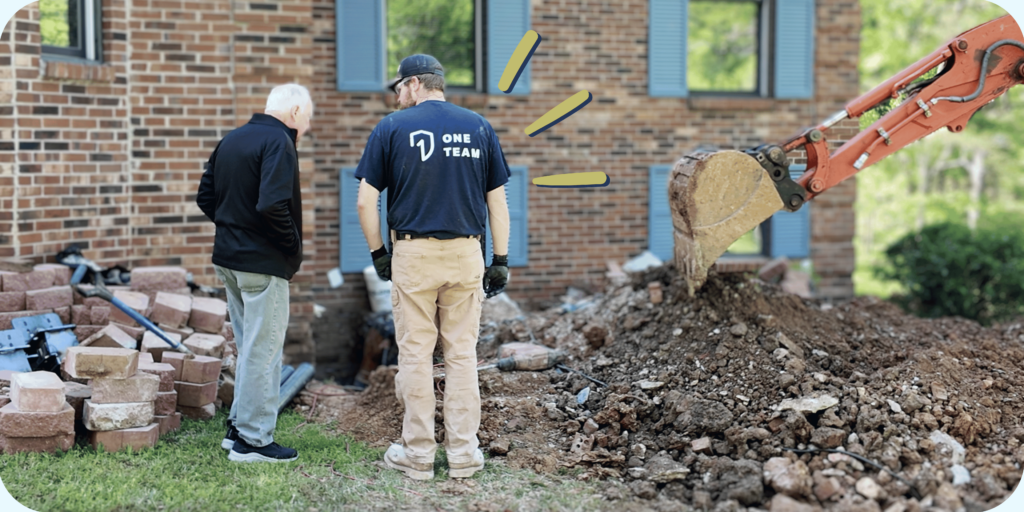Identifying and Repairing Foundation Cracks
When it comes to maintaining a safe and secure home, the foundation is undoubtedly one of the most critical components. Cracks in your foundation can be alarming, but they’re not uncommon. Fortunately, with the right knowledge and timely action, you can address these issues effectively. Here’s what the specialists from TFS—The Foundation Specialists—recommend for dealing with foundation cracks.
Understanding Foundation Cracks
Before jumping to solutions, it’s essential to understand the types of foundation cracks and their potential implications:
- Hairline Cracks: These are typically minor and often occur as a result of concrete curing. They’re usually not a cause for concern unless they expand over time.
- Vertical Cracks: Often due to concrete shrinkage, these cracks are generally not serious. However, if they widen, it may indicate a more significant issue.
- Horizontal Cracks: These are more concerning as they can indicate pressure from the outside, such as soil or water pressure, and may require immediate attention.
- Diagonal Cracks: Often caused by differential settlement, these cracks can affect the structural integrity of your home.
Why It’s Important to Address Foundation Cracks
Ignoring foundation cracks can lead to a host of problems, including:
- Water Infiltration: Cracks can allow water to seep into your basement, leading to moisture problems and potential mold growth.
- Structural Damage: Over time, untreated cracks can worsen, leading to significant structural damage and costly repairs.
- Decreased Property Value: A compromised foundation can affect your home’s market value and appeal to potential buyers.
Our Foundation Repair Methods
When it comes to addressing foundation issues, TFS- The Foundation Specialists—offers a range of repair products designed to tackle specific problems. Here’s a look at their top solutions and how they can help maintain the integrity of your home’s foundation.
-
Push and Helical Piers
- Purpose: These piers are used to stabilize and lift foundations that have settled unevenly.
- Usage: Helical piers are screwed into stable soil layers, while push piers are driven down to load-bearing strata. Both types are effective for lifting and supporting foundations, making them suitable for both new constructions and existing structures experiencing settlement issues.
-
Carbon Armor
- Purpose: Used to reinforce and stabilize foundation walls with minor cracks or bowing.
- Usage: Carbon armor is bonded to the wall with high-strength epoxy. It’s non-intrusive and can be painted over, providing a discreet solution for structural reinforcement without significant disruption to your living space.
-
GeoLock
- Purpose: GeoLock wall anchors stabilize and straighten bowing or leaning basement walls.
- Usage: These anchors work by securing the wall to stable soil outside, offering counter-pressure to the forces causing bowing. They can be adjusted over time to gradually straighten walls.
-
PowerBrace
- Purpose: PowerBrace is used to support and stabilize bowing basement walls.
- Usage: This system involves installing steel beams that brace the wall, preventing further movement and providing the potential to straighten the wall over time.
-
EverBrace
- Purpose: Designed to provide a long-lasting solution to structural wall issues.
- Usage: EverBrace involves installing a supportive framework that enhances wall stability and prevents further damage, ensuring the structural integrity of your home.
-
Lintel Lift
- Purpose: Lintel Lift addresses sagging or deflecting lintels above garage doors and windows.
- Usage: This method lifts and reinforces the lintel, preventing further sagging and ensuring proper support for the structure above.
Each of these products is designed to address specific foundation issues, ensuring that your home remains safe and stable for years to come.
Conclusion
Foundation cracks can be a daunting issue, but they can be effectively managed with the right approach. By understanding the types of cracks, consulting with professionals, and implementing regular maintenance, you can ensure the safety and longevity of your home. Remember, when in doubt, contact TFS—The Foundation Specialists—for expert advice and solutions tailored to your needs.

Next Steps
Safeguarding your home’s foundation and identifying foundation cracks is vital for maintaining its structural integrity and long-term value. By following these steps, you can ensure your foundation remains sturdy and secure. For professional assistance with foundation inspections and repairs, contact TFS, The Foundation Specialists, to schedule a complimentary evaluation and estimate today.
Schedule Your Free Inspection Today
For regular tips and industry updates, follow us on Instagram and Facebook.

